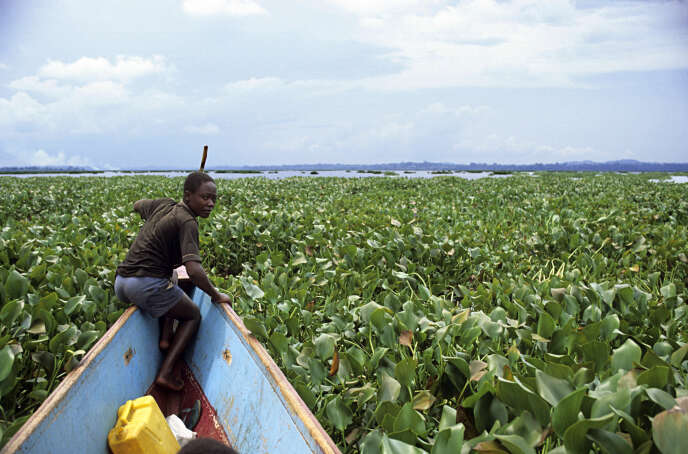Invasive water hyacinth choke lake Tana, Ethiopia
Sentinel-1 CSAR IW acquired on 16 October 2014 at 03:16:08 UTC
...
Sentinel-2 MSI acquired on 02 April 2019 at 07:46:11 UTC
Sentinel-2 MSI acquired on 09 October 2019 at 07:48:21 UTC
Sentinel-1 CSAR IW acquired on 14 October 2019 at 03:16:40 UTC
...
Sentinel-2 MSI acquired on 02 April 2019 at 07:46:11 UTC
Sentinel-2 MSI acquired on 09 October 2019 at 07:48:21 UTC
Sentinel-1 CSAR IW acquired on 14 October 2019 at 03:16:40 UTC
Keyword(s): Lake, water colour, water quality, seasons, vegetation, biodiversity, invasive specie, fishing, Ethiopia
In an article published on 4 september 2017 in The Conversation, Solomon Kibret wrote: "Lake Tana is the largest lake in Ethiopia. It holds 50% of the country’s fresh water. It is also the source of the Blue Nile, which contributes up to 60% of the Nile’s water. Not only is the lake important as a water source for over 123 million people in the Nile Basin, it is also a source of food in the form of fish. But weeds are threatening this life-giving resource. The lake has been listed in the top 250 lake regions of Global Importance for Biodiversity. It has 28 species of fish, of which 21 are endemic. Commercially, the lake’s most important fishes include the large African barbs, Nile tilapia and African catfish. The annual commercial value of fish production at Lake Tana is about USD$1.1 million."
"The potential fish production of the lake is estimated to be 13 000 tons yearly. But its current fish production is less than 1000 tons a year. Recent studies show a serious decline in fish stocks due to the spread of the aquatic weed water hyacinth around fish spawning grounds. Water hyacinth, Eichhornia crassipes, is an exotic free-floating invasive plant that is native to South America. People who tend aquariums and gardens are believed to have spread the plant inadvertently across the Atlantic to Africa and Asia. It restricts water flow, blocks sunlight from reaching native water plants and depletes the oxygen in the water - often choking aquatic animals like fish. It also has an economic impact by interfering with navigation, irrigation, power generation and fishery."
"In 2011, the Regional Environmental Bureau named water hyacinth as the most dangerous weed affecting Lake Tana. By then, about 20 000 hectares of the north-eastern shore of the lake was infested. In 2014, researchers from Ethiopia found out that about one-third of the lake’s shoreline, around 128km, was invaded by water hyacinth. In just two years, the estimated coverage of the weed doubled from 20 000 to 40 000 hectares. The weed is now estimated to cover 50 000 hectares of the lake. To make matters worse, inflowing rivers carry heavy loads of soil and suspended sediment into the lake, which affects the water quality and creates favourable conditions for the spread of the weed. The release of untreated waste water from industries around the lake adds to the deterioration of the lake ecosystem. As a consequence, the lake has lost 75% of its fish stock in recent years."
"Removing the weed, either manually or using machines, could reduce coverage and slow its spread. Local authorities are mobilising an estimated 162 000 people to remove the weed by hand. This happens only when the lake shores are accessible and when farmers have time. A weed harvesting machine can clear only 10 hectares a day, so it would take thousands of days to remove the weed entirely.
Herbicides can kill native plants that are necessary for a healthy functioning of the lake’s ecosystem."
"Biological control appears to be the most economical and effective approach to manage water hyacinth in the long term. It uses natural enemies, with little cost and usually no negative environmental impact. But this method takes years of work by the insect to clear the weed. For instance, the weevils took two years to control the weed at Lake Victoria in Uganda. Neochetina weevils eat only water hyacinth. Studies show that these weevils rely on the water hyacinth’s root system for crucial stages of growing. They feed heavily on the plant tissue: larvae eat the inside of the plant and adults eat the outside. Feeding damage by both life stages inhibits the growth of the plant by slowing the flowering process."

Water hyacinth invading Lake Victoria, Uganda - Source: Nicolas Granier for Biosphoto.













